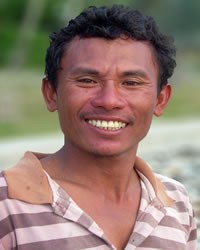Kayu Agung in Indonesia

Photo Source:
Copyrighted © 2026
Anonymous All rights reserved. Used with permission |
Send Joshua Project a map of this people group.
|
| People Name: | Kayu Agung |
| Country: | Indonesia |
| 10/40 Window: | Yes |
| Population: | 24,000 |
| World Population: | 24,000 |
| Primary Language: | Komering |
| Primary Religion: | Islam |
| Christian Adherents: | 0.18 % |
| Evangelicals: | 0.10 % |
| Scripture: | Portions |
| Ministry Resources: | No |
| Jesus Film: | Yes |
| Audio Recordings: | Yes |
| People Cluster: | Lampung of Sumatra |
| Affinity Bloc: | Malay Peoples |
| Progress Level: |
|
Introduction / History
The Kayu Agung live in about 40 villages in two districts in the province of South Sumatra. Kayu Agung means "the people of the noble wood".
The Kayu Agung speak Kayu Agung, a dialect of Komering. The Kayu Agung are made up of two groups: the Original Kayu Agung, who identify ethnically with the Komering people; and the Kayu Agung, who speak a different dialect. People in this second group identify themselves with the Original Kayu Agung, but not with the Komering.
What Are Their Lives Like?
Kayu Agung houses have wooden walls and floors with sago palm leaf roofs. They live in the lowlands along three rivers in their district. Tidal river flows impact the rivers, so the houses are usually raised several feet off the ground on wooden stilts.
Most of the area in which the Kayu Agung live has become somewhat urbanized, so their economy is more diversified than many other people groups in the area. Rubber tree plantations and farming are still the primary means of livelihood, but other Kayu Agung make a living as merchants, office workers and teachers.
Some Kayu Agung make their living through the unique role of "duta". A duta serves as a top class criminal in large cities. Dutas are celebrated for their ability to make large amounts of money. They are launched from their village with a special ceremony featuring prayer for safety and success. On their return to the village, they are welcomed back with another ceremony.
What Are Their Beliefs?
Almost all of the Kayu Agung follow Islam. However, many also hold traditional beliefs in the spirit world. The Kayu Agung believe that ancestral spirits can trouble humans. The Kayu Agung also consider some areas to be sacred places for the enthroned spirits of the departed. A dukun (shaman/healer) often performs rituals for planting and harvesting.
What Are Their Needs?
Kayu Agung society promotes unhealthy moral values, as evidenced by the social status of the duta. They need moral education to counter this culture, especially among the younger generation. The Kayu Agung already have a relatively diverse economy compared to other groups in the area, but they need further training and diversification to develop income sources to replace the use of the duta.
Prayer Points
Pray for freedom from fear of evil spirits and a hunger for the truth.
Pray for completion of the New Testament translation into the Komering language spoken by the Kayu Agung.
Ask God to send workers to the Kayu Agung to share the gospel and to direct those workers to people whose hearts are open.
Pray for the gospel to transform the Kayu Agung culture.
Pray for a movement to Christ among the Kayu Agung within the next decade.